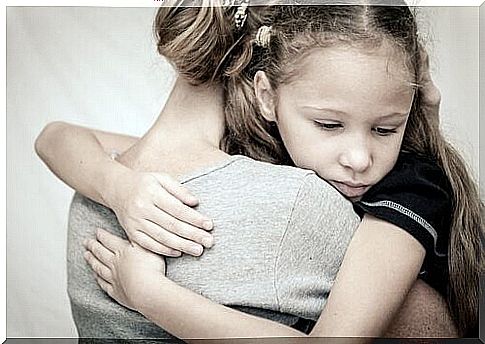Calming Childhood Anxiety

A child can experience anxiety in a very intense form. Furthermore, he does not have the same resources as an adult to regulate it. An intervention therefore becomes essential and, in this article, we will explain how it is possible to calm childhood anxiety.
The first element to consider concerns the verification of the minor’s state of anxiety. In fact, it will be necessary to ascertain the necessary application of one of the methods to calm childhood anxiety . It is a very complex emotion that can be triggered by multiple causes.
What are the causes of anxiety in children?
The causes of anxiety in children are varied. Often we talk about different factors that affect responsibilities, interpersonal relationships or family ones. For example, the separation of parents which, of course, implies severe consequences for the children, especially at an early age.

When children start to leave the house, spend time with their grandparents, or are confronted with early school issues, they can suffer from separation anxiety. In these situations, what begins as surface tension can turn into intense distress. Especially when there is nothing that can diminish the sense of threat that the child feels by finding himself separated from the people who transmit safety and protection to him.
This emotion can also be caused by contact with strangers, which is directly related to what has just been said. The important thing is to know how to identify a true episode of anxiety, as all children suffer from stress due to separation and contact with strangers, but this does not mean that they automatically suffer from a generalized anxiety disorder (GAD).
Other more serious causes can be abuse, a violent or dysfunctional family environment, or less traumatic but equally serious conditions for the child, such as a move, the death of a loved one, or the separation of parents. All these circumstances can favor the emergence of anxiety that the little ones are unable to control.
How to calm childhood anxiety?
First of all, it is essential to discern between a surface tension and a real anxiety. By mistakenly identifying this feeling, one risks depriving the child of the help they need or missing out on a challenge that could contribute, and a lot, to their growth. The first step, therefore, is to identify the problem and its cause, paying attention to how the child expresses the emotion.
If you are in the presence of a specific episode, you should try to reason with the child. While it may seem odd to many parents, their children often have more reasoning skills than is usually attributed to them. Helping them to externalize what is troubling them can help us obtain fundamental clues about this latent state of malaise.
The right collaboration will certainly allow us to find a solution. Additionally, we will foster positive reinforcement over pro-active communication based on reflection and reasoning.
Techniques to use to calm childhood anxiety
The solution to the problem can be obtained using different strategies.
- Reasoning is a good technique that helps the child to focus, relax and psychologically move away from the problem.
- If the little one is unable to use the right words, you need to understand how he feels. It is often difficult for them to describe new emotions and their parents will have to help them.
- It is important to convey calm and confidence. You can use various relaxation techniques to facilitate an objective analysis of the “threat”.
- Express your feelings too. Children learn many things by emulation, so you will also help them by sharing your mood. You will favor an increase in the child’s emotional vocabulary and, consequently, his dexterity and precision in describing how he feels about experiences, positive and negative.

In summary, these are the 5 steps you can follow to detect and calm childhood anxiety :
- Pay attention to the symptoms (physical and psychological).
- Discuss his problem with the child.
- Think about a collaborative solution.
- Practice techniques that improve his mood.
- If the problem persists and you feel that it goes beyond normal stress or anxiety, see a specialist.
Anxiety is an emotion that arises in the presence of a threat, past, present or future. Being so small and unstable, children can feel anxious about many circumstances, be they real or imagined. On the other hand, it is adults who have the responsibility of teaching to work in a positive way on their emotional states, the result of the way in which children perceive these threats.








